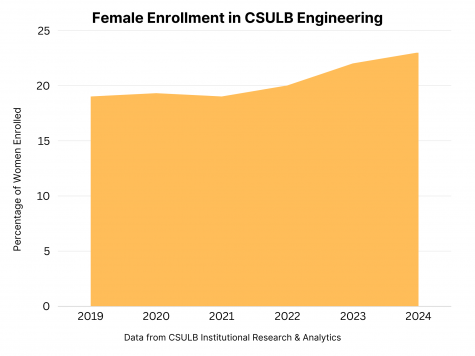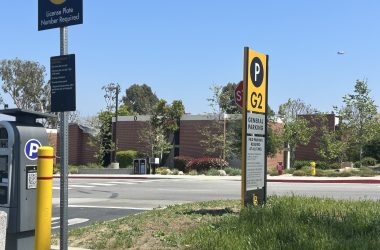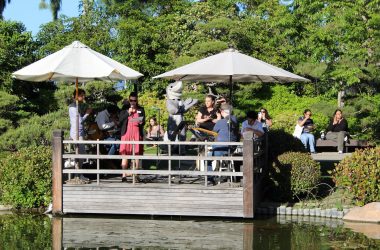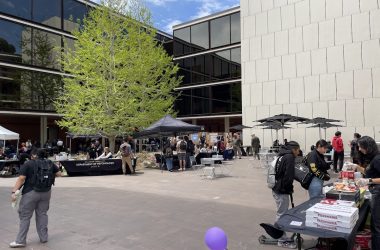By: Nate Martinez and Ava Domenichelli
Jenni Heng, a fourth year mechanical engineering major, walks into her thermal engineering laboratory course as one of only two women in her class.
Within the world of engineering education, this is the norm. According to 2021 statistics from the Society of Women Engineers, attained from the Natural Center for Education Statistics, women make up only 22.5% of bachelor’s degree holders in engineering and computer science in the United States.
“When I started taking more engineering specific courses, it’s one of the first things I noticed is like, wow, I’m one of four girls in my class of 30,” Heng said. “So that was definitely jarring.”
Senior Mechanical Engineering major Sindi Ascencio made similar observations of the uneven ratio of male to female engineering students at Long Beach State CSULB.
“I mean of course it bothers me,” Ascencio said regarding the ratio. “We wish we had more [women], you know, that we can follow their steps and see what they did to get there.”
Ascencio is from Cantón Las Granadillas, a small rural town in El Salvador. She said her hometown did not discourage her from becoming an engineer on the basis of being a woman.
“We don’t have that, you know, society telling you what to do,” Ascencio said. “I think it helped me a lot not to have someone, you know, tell me negative comments about what an engineer is or what they should do. ”
Meanwhile in the department of biomedical engineering, department head Shadnaz Asgari said how her classroom environment differs from other engineering departments.
“At least in the biomedical engineering department, when I go to class to teach, I see almost an equal number of women and men,” Asgari said. “So in that sense, our department is doing very well.”
As of the spring semester of 2024, the biomedical engineering department is comprised of 51.4% female undergrad students to 48.6% male, the highest ratio of female to male in any engineering department.
Asgari said that about 60% of her faculty are female and how that can encourage other women in the field as well. She attributes this increase in women to the direct impact biomedical engineering has on people’s lives.
“Many women in general would like to get involved in a field that they feel like whatever they do, they want to make sure it benefits society,” Asgari said. “In biomedical engineering, we make sure that whatever we teach, we show them how it’s going to be used to help save the lives of patients or improve health care.”
Overall, Asgari said the university’s commitment to supporting women engineers with various programs and events has helped shift the trend of engineering being a male dominated major.
One of the main initiatives has been the 100+ Women Strong Campaign along with its steering committee, which according to their website was, “[…] designed to fuel the College of Engineering’s priority to inspire, recruit, retain, graduate, and launch more CSULB women engineers into successful careers.”
Each year the committee hosts a conference for all women engineering students at the university.
“We hope that events such as the Women in Engineering Conference will provide industry knowledge and support needed to increase our [women’s] representation in the workforce,” Director and Campus Engineer Monica Amalfitano said in an email.
According to Amalfitano’s email, the numbers in attendance of the conference have increased over the years.
“Our conference is growing, and so we must be doing something right!” Amalfitano said. “The conference is well supported from our industry partners and we are also experiencing an influx of presenters and speakers.”
Jinny Rhee was hired as the first female dean of the college of engineering and is working to increase the enrollment of women within the department.

“We definitely are gunning for 50% or 70%,” Rhee said. “I mean we [women] ,are 50% of the population, we need to be at the table.”
In the fall of 2023, there was a 2% increase in female enrollment compared to the year before. Despite this, females only made up 22.1% of the total amount of engineering students.
“We’re happy for the little uptick,” Rhee said. “We definitely still have a lot of work to do.”
As one of the few females in her department, Rhee has pushed for more female representation.
The 100+ Women Strong Campaign allows engineering students to speak directly with working females.
“Seeing women in the industry who are successful…and hold higher positions…it’s kind of inspiring,” Heng said. “Like, okay it is possible; that’s something I could do.”
Heng said she gains inspiration from seeing a female dean chairing her department and is a feeling shared by Rhee as well, who was inspired by one of the few female professors during her time at university.
“You can’t really imagine yourself until you see someone who looks like yourself too,” Rhee said.
Asgari also said of the importance of seeing other women in the field.
“That’s the most important thing because you want to see there are other people like you who have the same passion as you when it comes to engineering,” Asgari said. “So being part of a group, you feel secure and you feel safe.”




